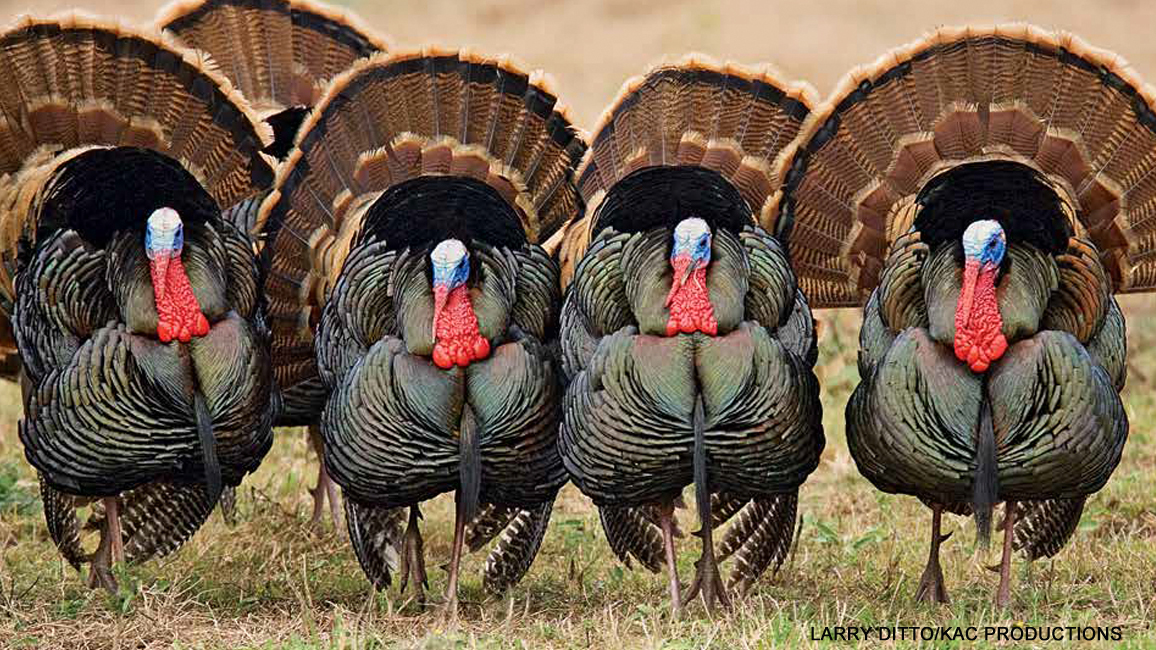
Wild Turkeys
By Gerry BishopThanksgiving is coming soon. That means it’s time for turkey—roasted golden brown and served with cranberry sauce, sweet potatoes, and pumpkin pie!
Farm-raised turkeys (the kind most of us eat for Thanksgiving dinner) have been around for hundreds of years. But there’s another kind of turkey that goes much further back in time. It’s the wild turkey—the ancestor of the turkeys that turn up on our dining-room tables. Here are some fascinating facts about these big, all-American birds.
VANISHING ACT
Wild turkeys have lived in North America for at least five million years. And all was well until settlers from Europe arrived. The settlers spread across the land, cutting down forests and wiping out the turkeys’ best habitat. The settlers also killed many turkeys for food. By the early 1900s, wild turkeys existed only in a few out-of-the-way places.
BIG COMEBACK
Years passed. As some forests began to grow back, a few people wondered: Could we catch some of the last wild turkeys and move them into the growing forests? And if so, would the turkeys make a comeback? The answer to both questions turned out to be “yes”! Today, there are more wild turkeys than ever before! Even with help, not every animal could have made such a quick comeback. But wild turkeys are smart. And their speedy legs help them flee from predators. When they have to, wild turkeys can even fly quickly (but not very far) to safety.
IT’S MATING TIME
Every spring, male turkeys, called toms, strut their stuff. It’s mating season, and they’re trying to prove who’s the biggest, baddest, and best turkey in the flock. The skin on their heads and necks turns bright red, white, and blue. They fluff out their feathers, spread their tails as peacocks do, and drag their wing tips on the ground. Gobble, gobble, gobble, they say, trying to call in hens from all around. But it’s not all strutting and showing off. Two rival males may approach each other and bump their chests together. And if one doesn’t back down, it’s neck-wrestling time. The “top tom” gets to mate with the most hens.
TURKEYS GO TO TOWN
Wild turkeys now live in every state except Alaska. And you don’t have to trek deep into woods to find them. In fact, some may show up in your backyard someday—if they haven’t already! Turkeys are even moving into cities. Brookline, Massachusetts, is a good example. Turkeys stroll down the sidewalks there, making people stop and stare. They raid birdfeeders, gardens, and pets’ food bowls. They rest in trees and on rooftops. And during the mating season, tom turkeys may even chase and try to pick fights with people! Who knows? One day a wild turkey may be bold enough to invite itself to someone’s Thanksgiving dinner—as a guest, of course!
FARM-RAISED TURKEYS
Farm-raised turkeys (top right photo) are bred to be extra big and and meaty. The birds are so heavy that, unlike their wild cousins, they can’t walk very well, or fly at all.
Many farm-raised turkeys live crowded together in barns. And sometimes their food has chemicals in it to fight diseases and make them grow faster. Having turkey for Thanksgiving? You may want to buy one labeled “free-range” and “antibiotic-free.”
“Time to Talk Turkey” originally appeared in the November 2014 issue of Ranger Rick magazine.
(Click on each image above for a closer view of the story.)


















